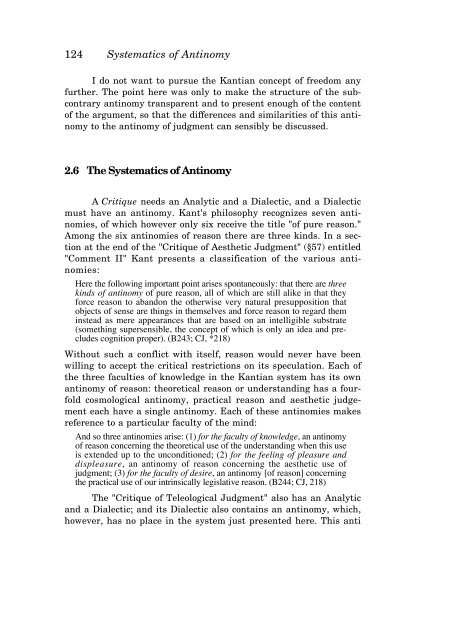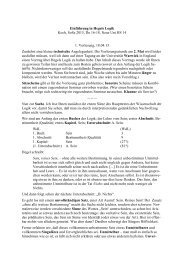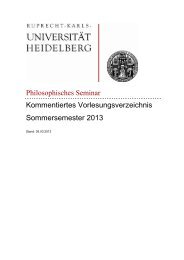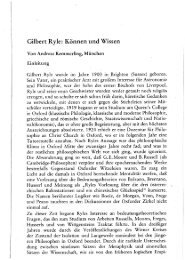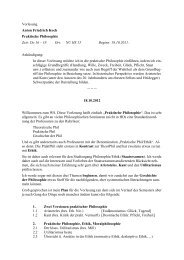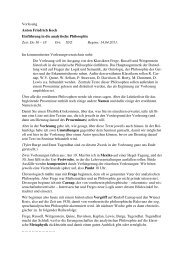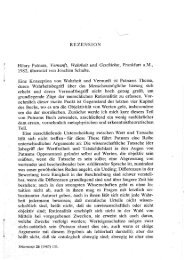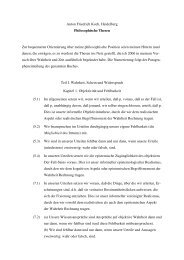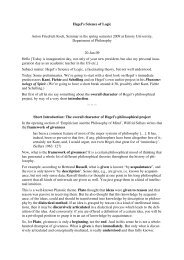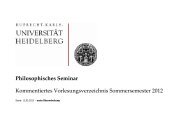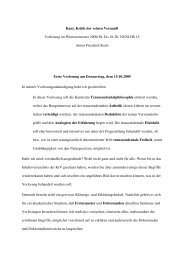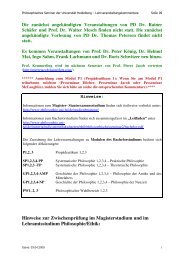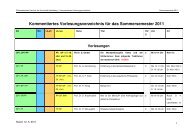KANT'S CRITIQUE OF TELEOLOGY IN BIOLOGICAL EXPLANATION
KANT'S CRITIQUE OF TELEOLOGY IN BIOLOGICAL EXPLANATION
KANT'S CRITIQUE OF TELEOLOGY IN BIOLOGICAL EXPLANATION
You also want an ePaper? Increase the reach of your titles
YUMPU automatically turns print PDFs into web optimized ePapers that Google loves.
124 Systematics of Antinomy<br />
I do not want to pursue the Kantian concept of freedom any<br />
further. The point here was only to make the structure of the subcontrary<br />
antinomy transparent and to present enough of the content<br />
of the argument, so that the differences and similarities of this antinomy<br />
to the antinomy of judgment can sensibly be discussed.<br />
2.6 The Systematics of Antinomy<br />
A Critique needs an Analytic and a Dialectic, and a Dialectic<br />
must have an antinomy. Kant's philosophy recognizes seven antinomies,<br />
of which however only six receive the title "of pure reason."<br />
Among the six antinomies of reason there are three kinds. In a section<br />
at the end of the "Critique of Aesthetic Judgment" (§57) entitled<br />
"Comment II" Kant presents a classification of the various antinomies:<br />
Here the following important point arises spontaneously: that there are three<br />
kinds of antinomy of pure reason, all of which are still alike in that they<br />
force reason to abandon the otherwise very natural presupposition that<br />
objects of sense are things in themselves and force reason to regard them<br />
instead as mere appearances that are based on an intelligible substrate<br />
(something supersensible, the concept of which is only an idea and precludes<br />
cognition proper). (B243; CJ, *218)<br />
Without such a conflict with itself, reason would never have been<br />
willing to accept the critical restrictions on its speculation. Each of<br />
the three faculties of knowledge in the Kantian system has its own<br />
antinomy of reason: theoretical reason or understanding has a fourfold<br />
cosmological antinomy, practical reason and aesthetic judgement<br />
each have a single antinomy. Each of these antinomies makes<br />
reference to a particular faculty of the mind:<br />
And so three antinomies arise: (1) for the faculty of knowledge, an antinomy<br />
of reason concerning the theoretical use of the understanding when this use<br />
is extended up to the unconditioned; (2) for the feeling of pleasure and<br />
displeasure, an antinomy of reason concerning the aesthetic use of<br />
judgment; (3) for the faculty of desire, an antinomy [of reason] concerning<br />
the practical use of our intrinsically legislative reason. (B244; CJ, 218)<br />
The "Critique of Teleological Judgment" also has an Analytic<br />
and a Dialectic; and its Dialectic also contains an antinomy, which,<br />
however, has no place in the system just presented here. This anti


